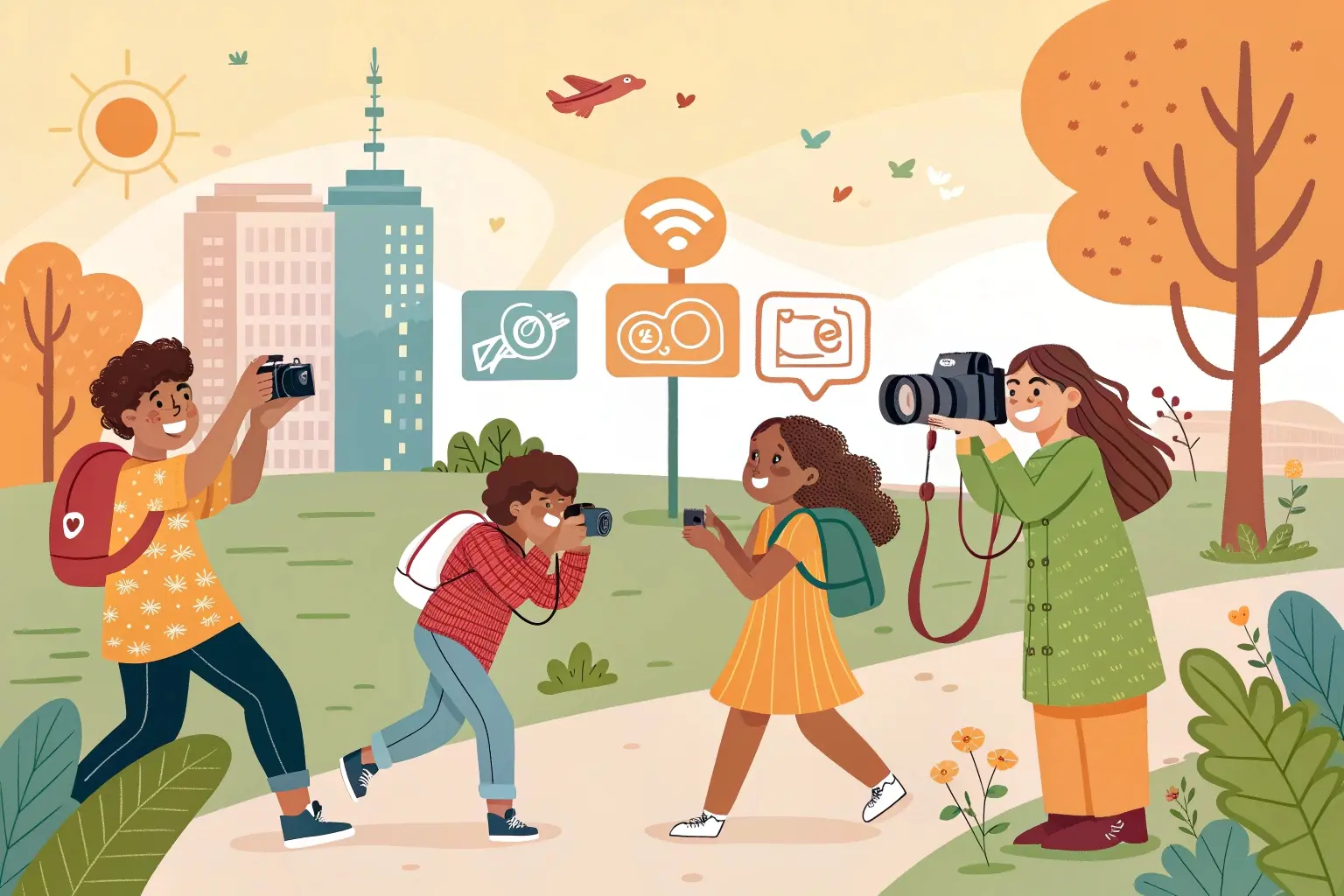Starting your photography journey? Choosing the right camera can feel overwhelming. Fear not! We’ve curated a list of the top 10 beginner-friendly digital cameras in 2025, balancing affordability, intuitive design, and stunning results. Whether you’re into vlogging, travel, or family photos, there’s a perfect match here.
Contents
- 1 1. Canon EOS R100 Mark II
- 2 2. Sony ZV-E20
- 3 3. Fujifilm X-T40 Mirrorless
- 4 4. Nikon Z30 II
- 5 5. OM System OM-5 Lite Price: $899 (body only)Key Features:
- 6 6. Panasonic Lumix G100D
- 7 7. Sony A7C II
- 8 8. Canon PowerShot G7 X IV
- 9 9. DJI Pocket 4
- 10 10. Ricoh GR IV
- 11 How to Choose Your First Camera
- 12 Final Thoughts
- 13 FAQs
- 14 Should I buy used?
- 15 What accessories are essential?
- 16 How long until I “outgrow” a beginner camera?
1. Canon EOS R100 Mark II
Price: 799 (body only) ∣ 999 (with 18-45mm kit lens)
Key Features:
- 24.2MP APS-C sensor with AI-powered autofocus.
- 4K/30p video + “Selfie Mode” with flip-out touchscreen.
- Guided UI with interactive tutorials for settings like ISO and aperture.
Pros: Lightweight, perfect for travel; seamless smartphone integration.
Cons: No in-body stabilization.
Why We Love It: Canon’s redesigned menu system feels like a photography coach in your hands.
2. Sony ZV-E20
Price: $849
Key Features:
- 20.1MP APS-C sensor optimized for video.
- AI-driven background blur and real-time eye tracking.
- Built-in directional mic and wind muffler.
Pros: Vlogger’s dream; plug-and-play simplicity.
Cons: Limited lens selection for APS-C E-mount.
Why We Love It: Shoot cinematic content straight out of the box.
3. Fujifilm X-T40 Mirrorless
Price: $1,099 (body only)
Key Features:
- 26.1MP X-Trans sensor with 19 film simulations (including Nostalgic Negative).
- 6-stop in-body stabilization + 4K/60p.
- Retro dials with “Auto+” mode for instant creativity.
Pros: Gorgeous JPEGs; tactile controls inspire learning.
Cons: Pricier than peers.
Why We Love It: Makes every shot look like a masterpiece, even on auto.
4. Nikon Z30 II
Price: $749 (with 16-50mm lens)
Key Features:
- 20.9MP DX sensor optimized for social media.
- Vertical video mode + 3-hour battery life.
- Lightweight (415g) and dust-resistant.
Pros: Ideal for Instagram/TikTok creators.
Cons: No viewfinder.
Why We Love It: A compact powerhouse for content creators.
5. OM System OM-5 Lite Price: $899 (body only)
Key Features:
- Weather-sealed Micro Four Thirds body.
- 50MP high-res shot mode (tripod required).
- Live ND filters for long exposures without extra gear.
Pros: Adventure-ready; intuitive “Pro Capture” mode.
Cons: Smaller sensor than APS-C rivals.
Why We Love It: Learn advanced techniques without the complexity.
6. Panasonic Lumix G100D
Price: $649 (with 12-32mm lens)
Key Features:
- 20.3MP MFT sensor with vlogging-focused design.
- Flip screen + OZO Audio by Nokia.
- Bluetooth 5.3 for instant transfers.
Pros: Best budget vlogging camera.
Cons: Average low-light performance.
Why We Love It: A steal for influencers on a budget.
7. Sony A7C II
Price: $1,599 (full-frame, body only)
Key Features:
- 33MP full-frame sensor in a compact body.
- AI autofocus for humans, animals, and vehicles.
- 10fps burst shooting.
Pros: Future-proof for growing skills.
Cons: Expensive for beginners.
Why We Love It: The gateway to professional photography.
8. Canon PowerShot G7 X IV
Price: $899
Key Features:
- 1-inch 20.1MP sensor with f/1.8-2.8 lens.
- 5-axis stabilization + 4K/120p slow-mo.
- Pocket-sized with 180° flip screen.
Pros: No lenses needed; perfect for travel.
Cons: Fixed lens limits versatility.
Why We Love It: The ultimate point-and-shoot for foodies and travelers.
9. DJI Pocket 4
Price: $549
Key Features:
- 1/1.7-inch sensor with 3-axis gimbal.
- 4K HDR video + AI editing presets.
- Fits in your palm.
Pros: Stabilized footage on the go.
Cons: Not ideal for still photography.
Why We Love It: Effortless storytelling for action and travel.
10. Ricoh GR IV
Price: $999
Key Features:
- 28mm fixed lens with APS-C sensor.
- Snap focus for street photography.
- WiFi 6E and USB-C charging.
Pros: Discreet and powerful.
Cons: Niche appeal.
Why We Love It: Cult classic for aspiring documentary photographers.
How to Choose Your First Camera
- Budget: Start under $1,000 unless you’re certain about your niche.
- Size: Mirrorless > DSLR for portability.
- Lens Ecosystem: Canon RF and Sony E-mount offer the most options.
- Smartphone vs. Camera: A dedicated camera still wins for manual control and low-light performance.
Final Thoughts
The best beginner camera is the one you’ll use. Prioritize ergonomics and fun features over specs. In 2025, AI and connectivity have made learning easier than ever—so grab a camera and start shooting!
Prices and availability accurate as of February 16, 2025. Retail links available upon request.
FAQs
Should I buy used?
Yes! Check refurbished models from Canon or Sony to save 20-30%.
What accessories are essential?
A spare battery, SD card (UHS-II), and a lightweight tripod.
How long until I “outgrow” a beginner camera?
Most serve well for 2-3 years as you master manual modes.

